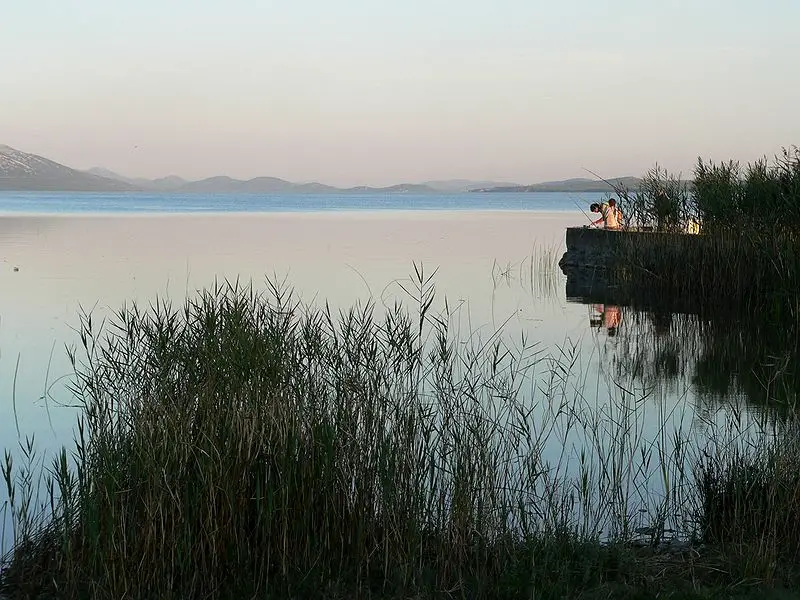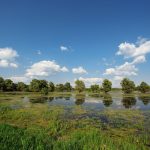As Morski writes, cases of the influence of sea water have been recorded in Vrana Lake, which has led to the death of the lake’s fish, but also the entry of marine organisms into Vrana Lake. An international interdisciplinary team led by researchers from the Rudjer Boskovic Institute have investigated how these changes in the balance of precipitation and evaporation, the prolongation of dry seasons and intensive irrigation affect microbial communities in coastal freshwater lakes.
Even with a slight increase in salinity in freshwater lakes, there may be a complete change in nutrients, which affects the growth and development of naturally occurring flora and fauna, or accelerate the aging process of coastal freshwater lakes.
Resident microorganisms are responsible for the role of energy transfer in aquatic ecosystems and act as a link between dissolved organic matter and organisms belonging to higher trophic levels. Their metabolic activity regulates the amount and shape of molecular carbon present in lakes and thus affects the global carbon cycle and the emission of greenhouse gases from biological sources.
Microorganisms are highly sensitive to changes in their environment and can therefore be used as indicators of change. In the coastal area of Dalmatia, more and more frequent hydrological changes are being observed, which manifest themselves as prolonged periods of drought or intense showers in the wetter period of the year. Vrana Lake near Biograd na Moru is the largest natural lake in all of the Republic of Croatia, and together with local sources, it supplies the most agriculturally developed part of central Dalmatia – Ravni Kotari.
The aging process of the lake has been studied by Rudjer Boskovic Institute scientists
The level and characteristics of lake water in Vrana Lake all depend on the amount of precipitation experienced and the load of local springs used for field irrigation. In the last twenty years, periods have been recorded in which seawater affected the lake through a partially eroded limestone reef and a canal connecting the lake with the sea, causing fish deaths and the entry of marine species.
”We decided to investigate the seasonal changes in the microbial community of Vrana Lake because its stability is key to establishing balance within the entire lake. We wanted to determine if there’s a link between the dissolved organic matter present in the lake, the phytoplankton community that produces it, and the bacteria that feed on it. We conducted sampling at two points in order to collect information on changes in the microbiological community that could be caused by potential salinisation and agronomic activity,” explained Lorena Selak of the Rudjer Boskovic Institute in Zagreb.
While conducting this research, she added, they used a high-throughput method of sequencing environmental DNA.
”Based on the distribution of the dissolved organic matter and its molecular composition, we found that Vrana Lake is highly productive and doesn’t depend on the intake of organic matter from external sources. The microbial communities of the water column(s) are interconnected by the native production of organic matter, which is highest in the summer months. Prolonged droughts and intensive irrigation have caused a precipitation-evaporation imbalance that has led to an increase in potentially harmful cyanobacteria on the one hand, and the entry of seawater and marine species within microbial eukaryotes and bacteria on the other,” Selak stated.
”Using the results we obtained, we can say that there’s a great need to deepen our level of understanding of the microbial community and its response to intense changes in freshwater ecosystems that are extremely rare and valuable sources in the coastal areas of the Mediterranean,” concluded the head of the research team, Dr. Sandi Orlic.
In nature, this process goes on for thousands of years, but due to various environmental changes in the aquatic ecosystem and human impact, the process of eutrophication of the environment has been shortened to a span of only a few years. In the process of eutrophication of aquatic systems, algae grow intensively, the amount of oxygen decreases and animal species gradually die out, and aquatic ecosystems, usually lakes, change colour to dark green and brown.
Scientists from the Liebniz Institute in Germany, Hrvatske vode (Croatian waters) and the Faculty of Science in Zagreb all participated in the international research headed by Rudjer Boskovic Institute scientists.
For more, make sure to check out our lifestyle section.









